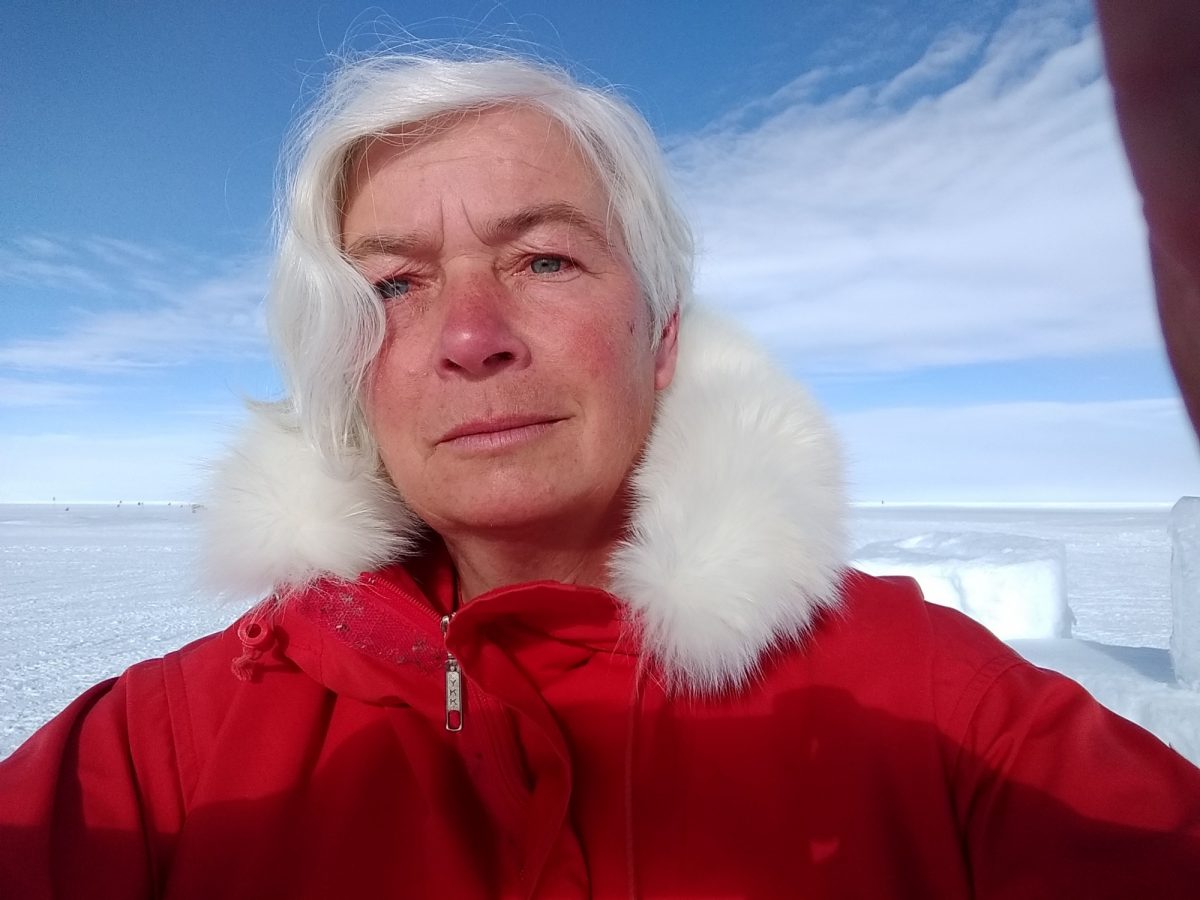
UM Professor Dorthe Dahl-Jensen (pictured) is one of the scientists featured in Lars Ostenfeld's documentary "Into the Ice".
UM researcher and scientist adds perspective to climate change documentary
'Into the Ice' follows a team of glaciologists attempting to uncover answers to the “world’s most dangerous uncertainty”
A new documentary is investigating the impact of climate change on the eroding Greenland ice sheet. “Into the Ice”, directed by Lars Ostenfeld, follows three of the world’s leading glaciologists as they embark on a grand scientific expedition to uncover the answer to one of the biggest mysteries that has plagued climate scientists for years.
Dorthe Dahl-Jensen, a UM professor and Canada Excellence Research Chair at the Centre for Earth Observation Science, is one of the scientists featured in the documentary. The film is an adventure on an epic scale, as she and fellow internationally renowned scientists Alan Hubbard and Jason Box traverse the Greenland ice sheet and explore some of the harshest environments on the planet in the name of science.
Dahl-Jensen has dedicated her career to understanding the scale of the climate crisis and its implications for the future. Her involvement in the documentary came after Ostenfeld contacted her with an adventurous proposal to help uncover some answers to the questions that she and other climate scientists had been asking for a long time. Namely, how fast is the Greenland ice sheet melting and what future are we heading towards as oceans rise?
Ostenfeld, in an interview with Variety, called the mystery of the rate at which the ice sheet is melting the “world’s most dangerous uncertainty”.
The centerpiece of the visually stunning documentary is a dizzying sequence in which Hubbard and director Ostenfeld rappel down a so-called “moulin”, a vertical well-like shaft within the ice sheet created by melting water. As they make their dangerous, jaw-dropping descent down the 180-meter-deep hole secured only by a rope, the pair gain unprecedented insight into the rapidity of the ice melt.
“It has been a very positive experience,” Dahl-Jensen says of working with Ostenfeld. “He is very good at working together – so he looks then asks and plans and then we go. He rarely asks you to do things just for the movie but likes to film what you are doing.”
Dahl-Jensen has spent much of her impressive career studying the arctic ice and has been conducting scientific studies in the harsh Greenland environment since 1981. In 2020, she led a team of international scientists there to study the one-of-a-kind fossil plants and sediment from the bottom of the island. That same year, she was awarded the International Mohn Prize for outstanding Arctic research.
“My work drilling an ice core through the biggest ice stream on the Greenland ice sheet fits very well in the documentary,” says. Dahl-Jensen. “We want to learn how the ice slides and moves fast to the outlet fjords where the ice breaks off as icebergs and contributes fresh water to the ocean. It’s an important source of mass loss from the Greenland ice sheet.”
Dahl-Jensen and the makers of “Into the Ice” hope that the important research they have collected through drilling and exploring the inland ice will help provide more accurate modelling and increase awareness of how rapidly the effects of climate change are transforming our planet.
“The Greenland ice sheet is reacting to the warming climate,” she says regarding the conclusions of her study. “This leads to melt and mass loss from the Greenland ice sheet contributing strongly to the sea level rise and changing the conditions in the oceans around Canada and Greenland.”
“Into the Ice” premiered in March at the Copenhagen Documentary Film Festival. Watch the trailer here.






